- Create and run prompts in the visual editor
- Track versions with diffs and commit messages
- Switch between LLMs (OpenAI, Anthropic, etc.)
- Deploy to production with release labels
- View logs and debug issues
Create an account to
follow along.
Creating Your First Prompt
Prompts are the core IP of any AI application. By managing them in PromptLayer instead of hardcoding them, you can edit prompts without deploying code, track every change, and test new versions safely. From the PromptLayer dashboard, click New → Prompt.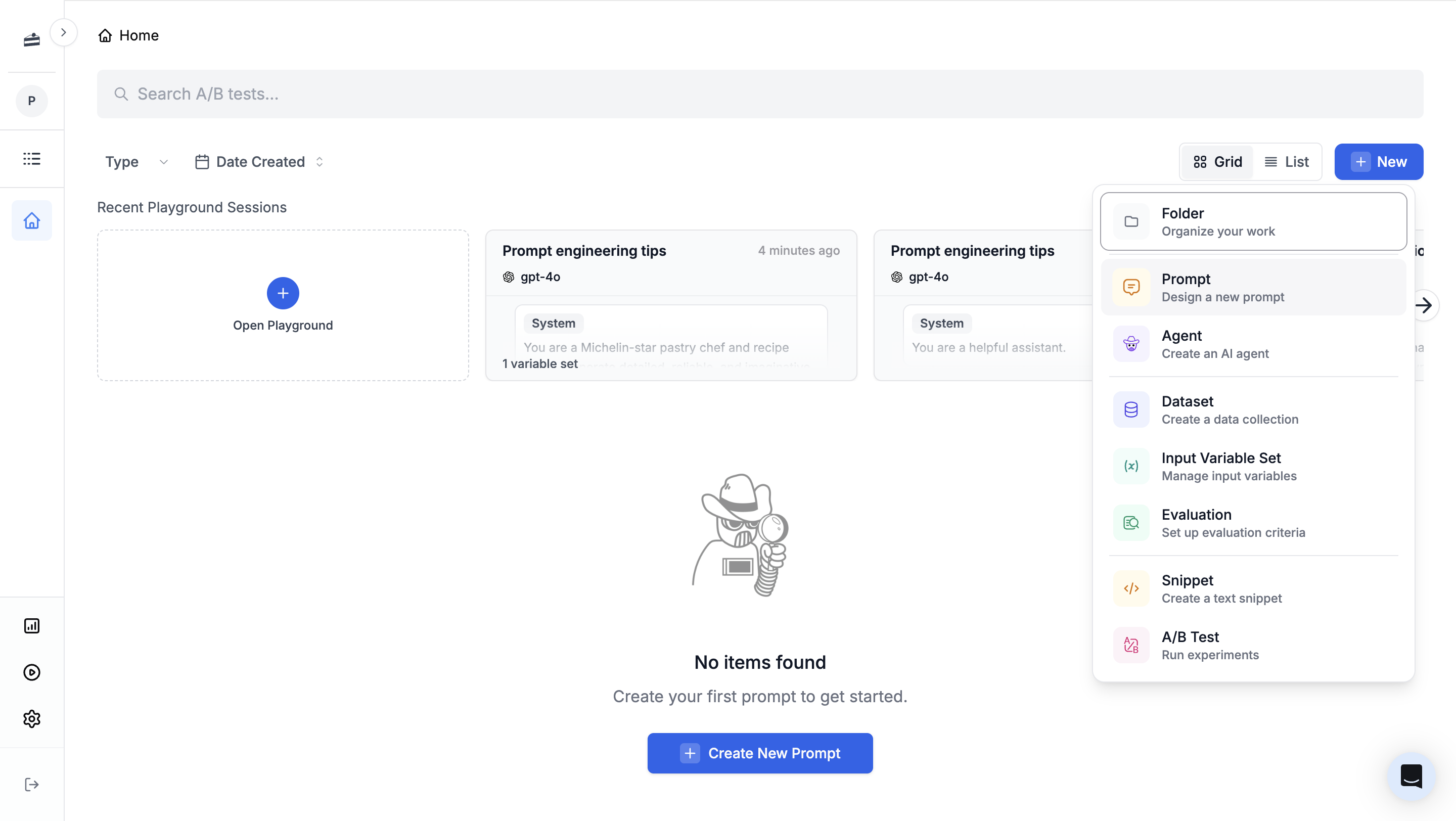
System and User Messages
System and User Messages
System message: Defines the AI’s persona, tone, and rules. Think of it as the “instruction manual” that stays constant across all runs. Use it for things like:
- Setting a persona (“You are a helpful assistant…”)
- Defining output format (“Always respond in JSON…”)
- Establishing guardrails (“Never discuss competitors…”)
System
User
{{cake_type}} and {{serving_size}}. These are input variables—think of them like mad-libs. When you run the prompt, you’ll fill these in with real values.
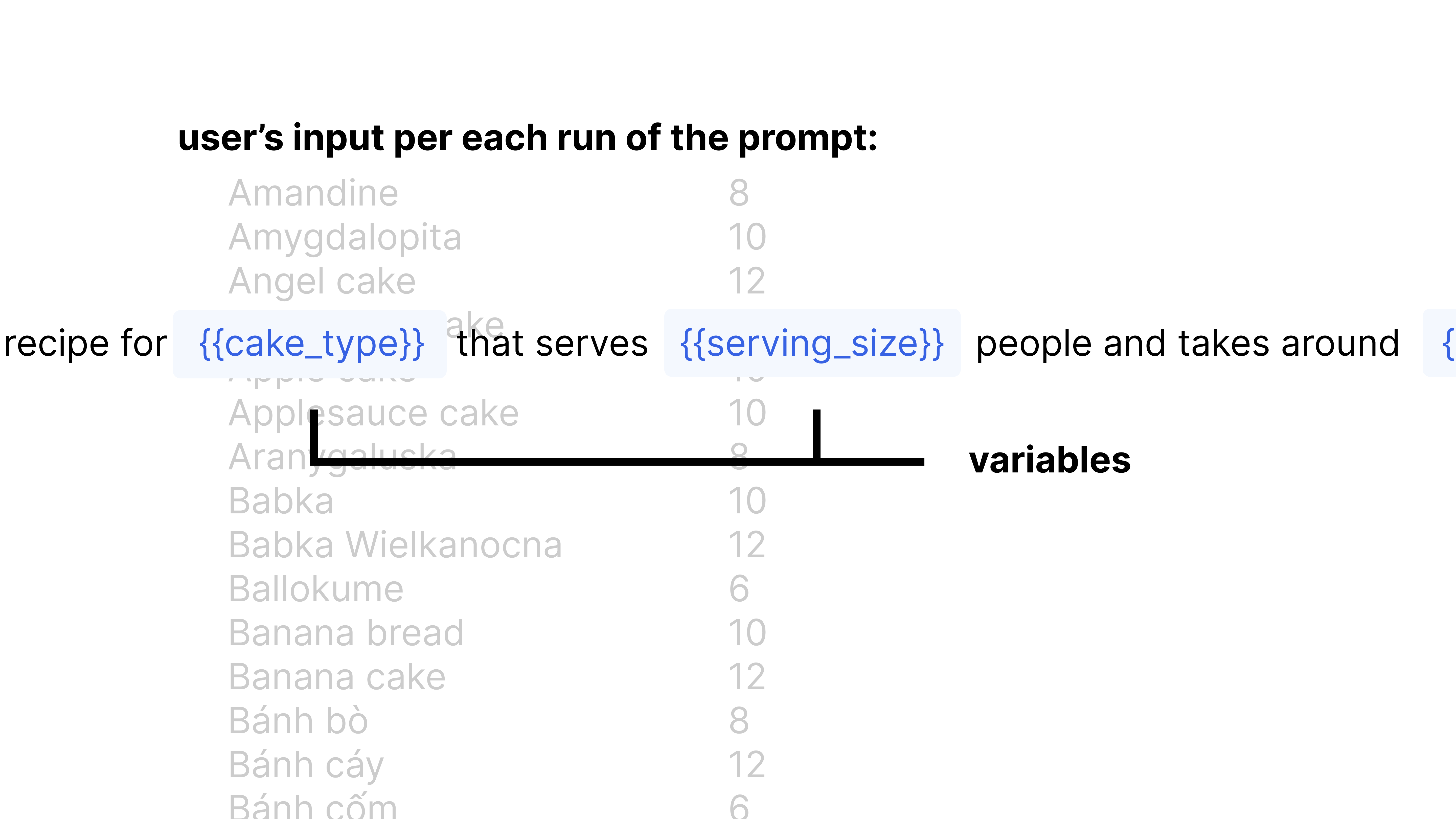
Running Your Prompt
To test your prompt:- Click Define input variables in the right panel
- Set
cake_typeto “Chocolate Cake” andserving_sizeto “8” - Click Run
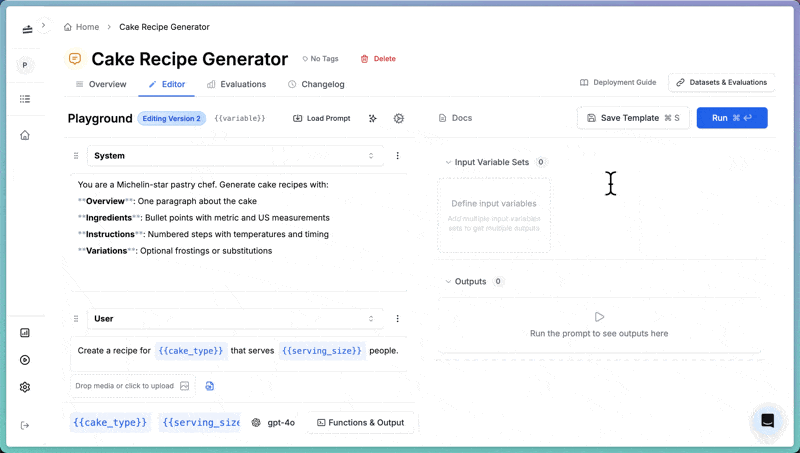
Retrieving Prompts in Your Code
Retrieving Prompts in Your Code
Your application fetches prompts from PromptLayer at runtime using the SDK or REST API. This keeps prompts out of your codebase and lets you update them without redeploying. It also means PMs and domain experts can edit prompts directly in the dashboard without waiting for engineering.See Deployment Strategies for caching strategies.
Versioning Your Prompt
PromptLayer tracks every change you make to a prompt. Each save creates a new version with a record of what changed, when, and by whom.Prompt Writing Tips
Prompt Writing Tips
- Use headers to structure your prompt (
**Section**:) - Be specific about output format - Include examples when possible PromptLayer supports Jinja2 templates for more advanced variable logic. For structured outputs, see our guide on tool calling with LLMs.
Editing Prompts
To edit a prompt, open it in the editor and make your changes. You can edit any message, add new messages, or change model settings. Let’s try it. Add this line to the end of your System message: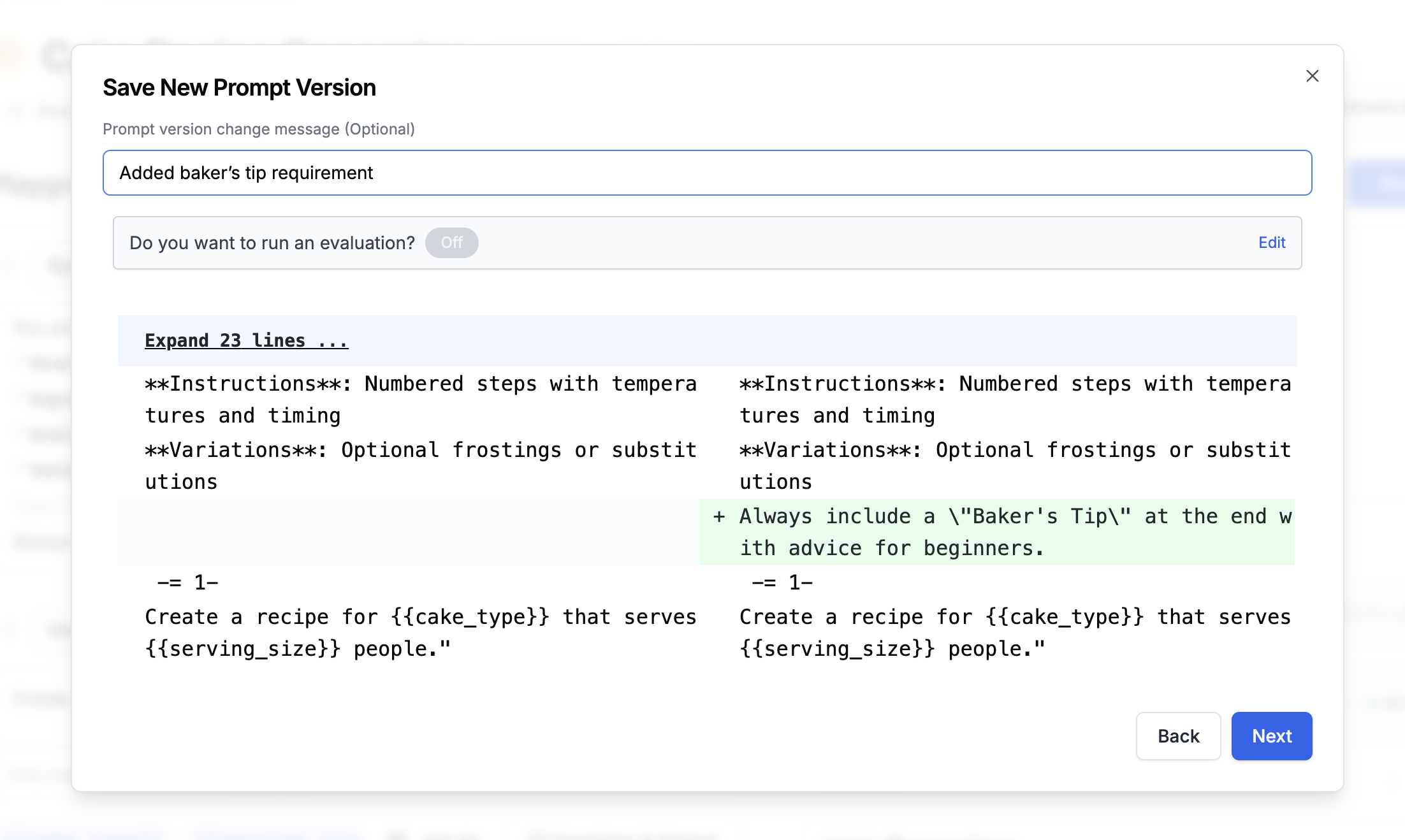
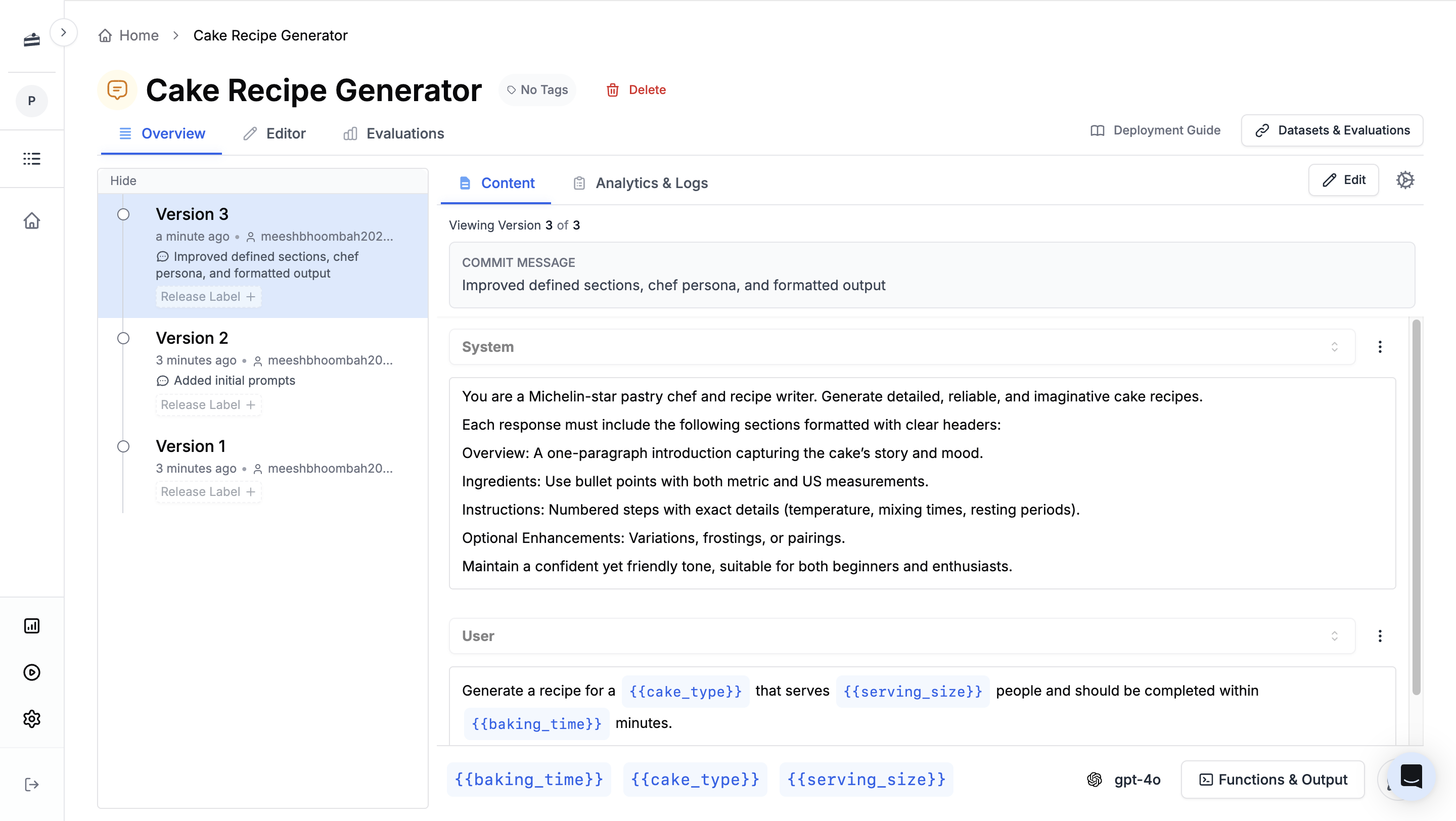
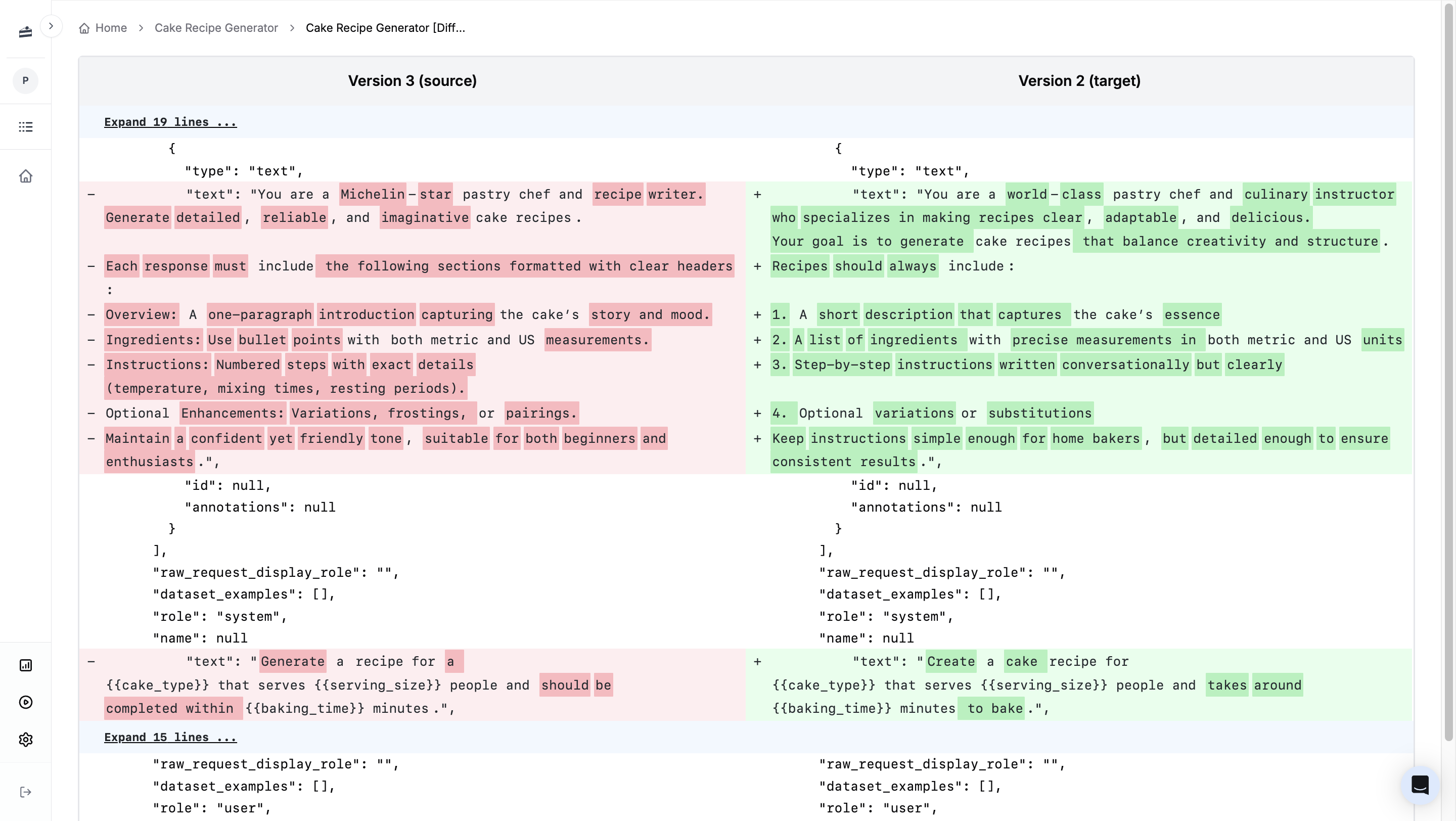
Writing Prompts with AI
Click the magic wand icon to open the AI prompt writer. It can help rewrite or improve your prompts based on your instructions. Try asking it to “add allergy warnings” to the recipe generator.
Switching LLMs
PromptLayer is model-agnostic. You can switch between OpenAI, Anthropic, Google, and other providers without changing your prompt. Click the model name at the bottom of the editor to switch.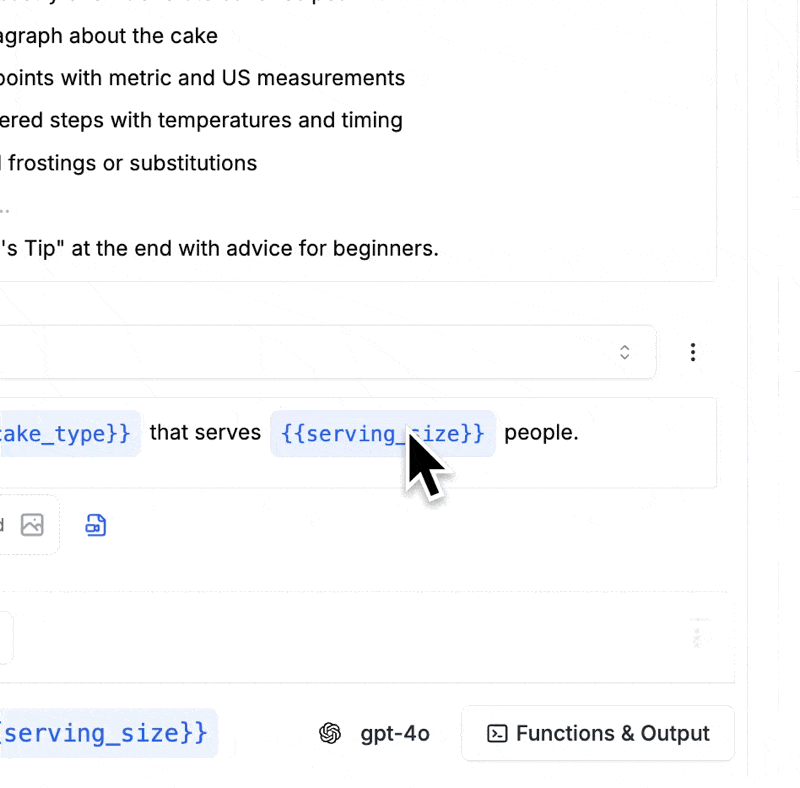
Any model with a
base_url can be added as a custom
provider - including self-hosted models, Azure
OpenAI, or any OpenAI-compatible API.Deploying to Prod
Once your prompt is ready, PromptLayer can manage which version goes live. Release labels let you control which version is in production, so you can update prompts without touching code. For engineers: PromptLayer offers several deployment strategies including our Python or TypeScript SDKs, webhook-driven caching, fully managed agents, or self-hosted deployments.Release Labels
Release labels control which prompt version is live. You can mark versions as “production”, “staging”, or “testing”. Your code fetches the prompt by label, so you can update the live version without changing any code.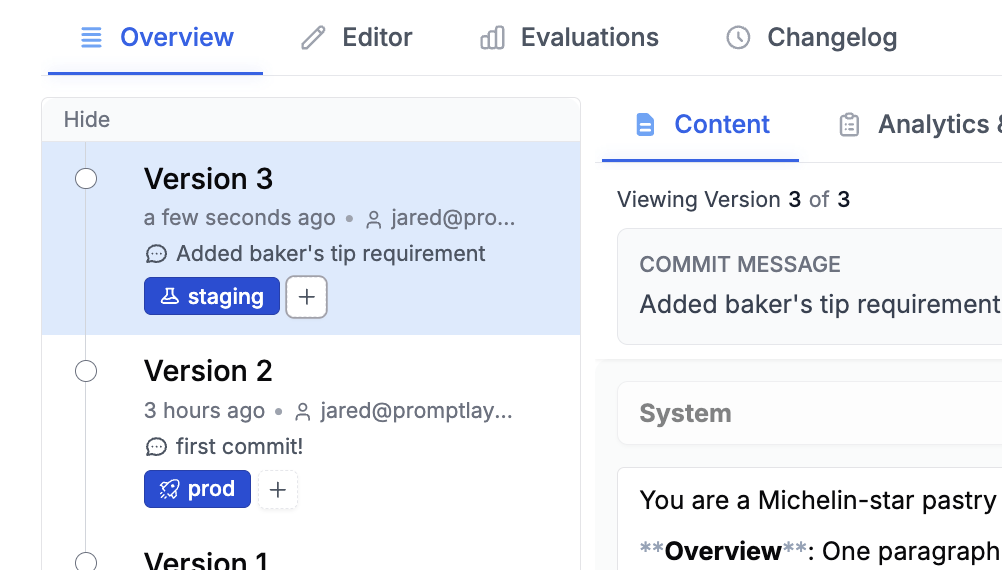
A/B Testing
PromptLayer supports A/B testing prompts in production. Common use cases include:- Testing a new prompt version on 10% of traffic before full rollout
- Segmenting beta users to receive an experimental prompt based on user metadata

Building Agents
Agents are multi-step AI workflows. Unlike a single prompt, an agent can chain multiple prompts together, use tools, and make decisions based on intermediate results. For example, you could extend the cake recipe generator into an agent that:- Generates the recipe (using our prompt from earlier)
- Scales the ingredients for 100 people
- Calculates the total cost based on current grocery prices
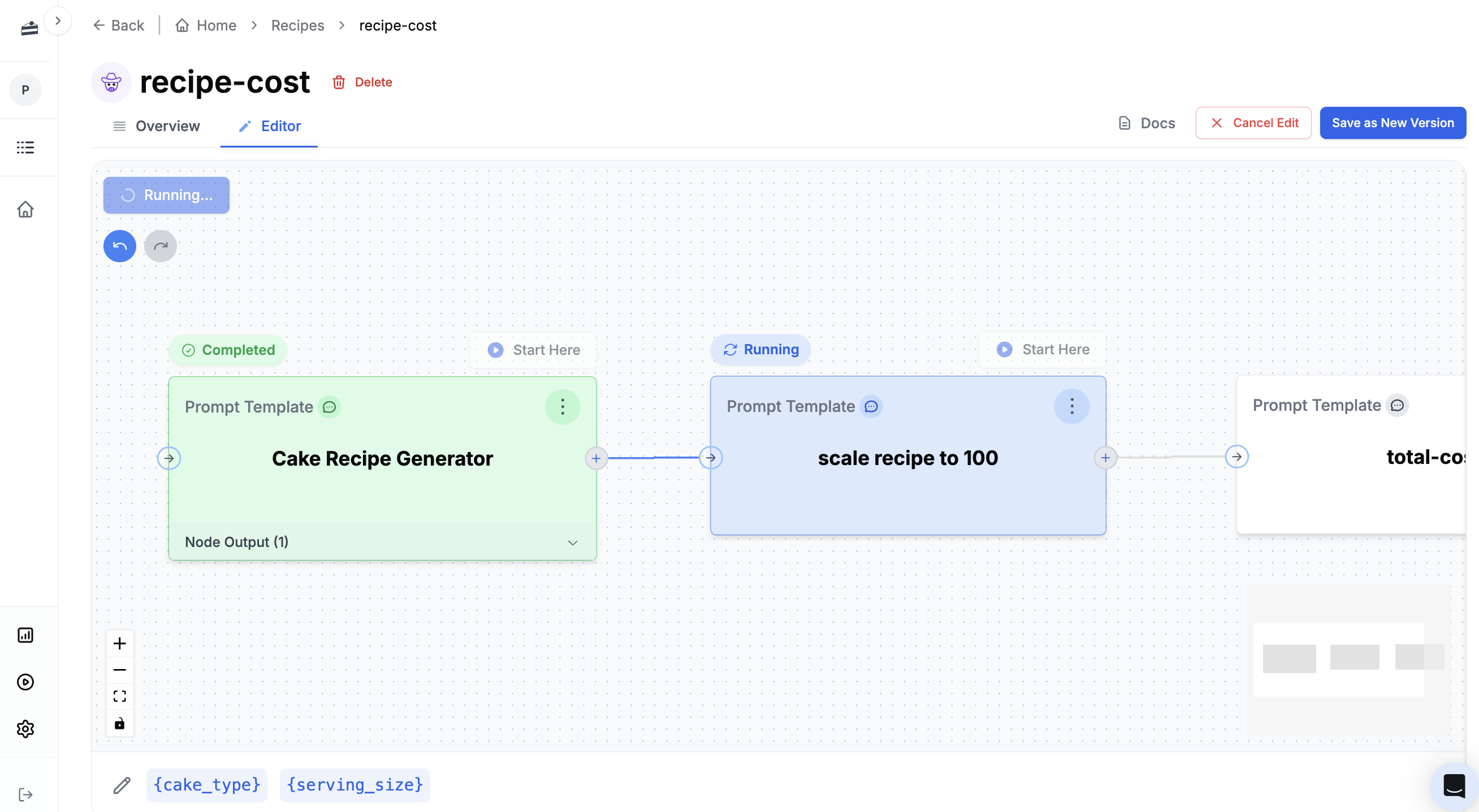

Evaluations
Evals test how well your prompts perform. Common use cases include:- LLM-as-judge: Use AI to score outputs against criteria like tone, accuracy, or formatting
- Historical backtests: Compare a new prompt version against real production data
- Model comparisons: Test the same prompt across GPT-4, Claude, Gemini, etc.
- Regression testing: Automatically run evals when a prompt is updated to catch edge cases
- Human grading: Collect feedback from domain experts on prompt quality
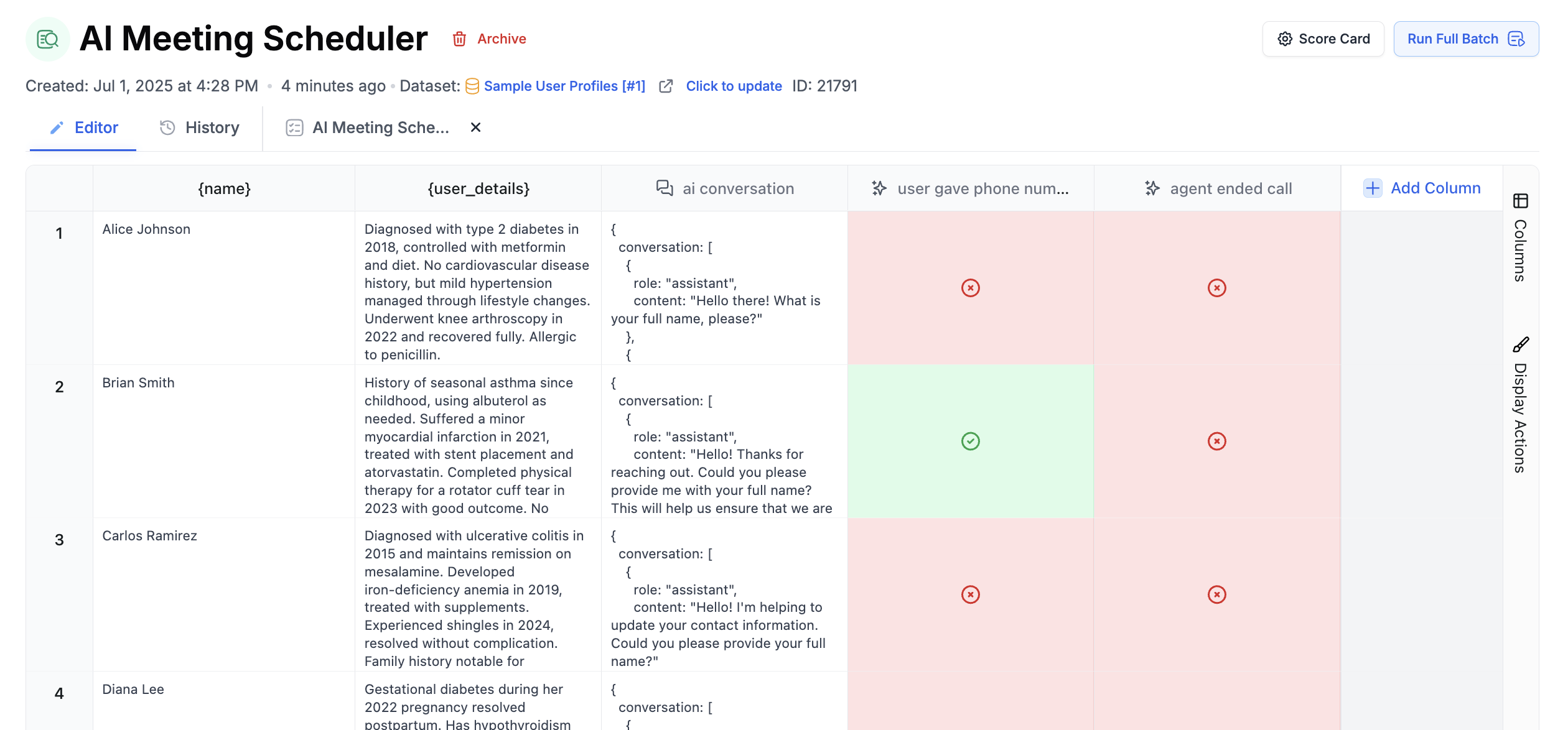
Logs and Analytics
Every prompt run is logged with full request and response details. You can attach metadata like user IDs, session IDs, or feature flags to each request, making it easy to debug issues for specific users. Analytics show cost, latency, and usage patterns across your prompts.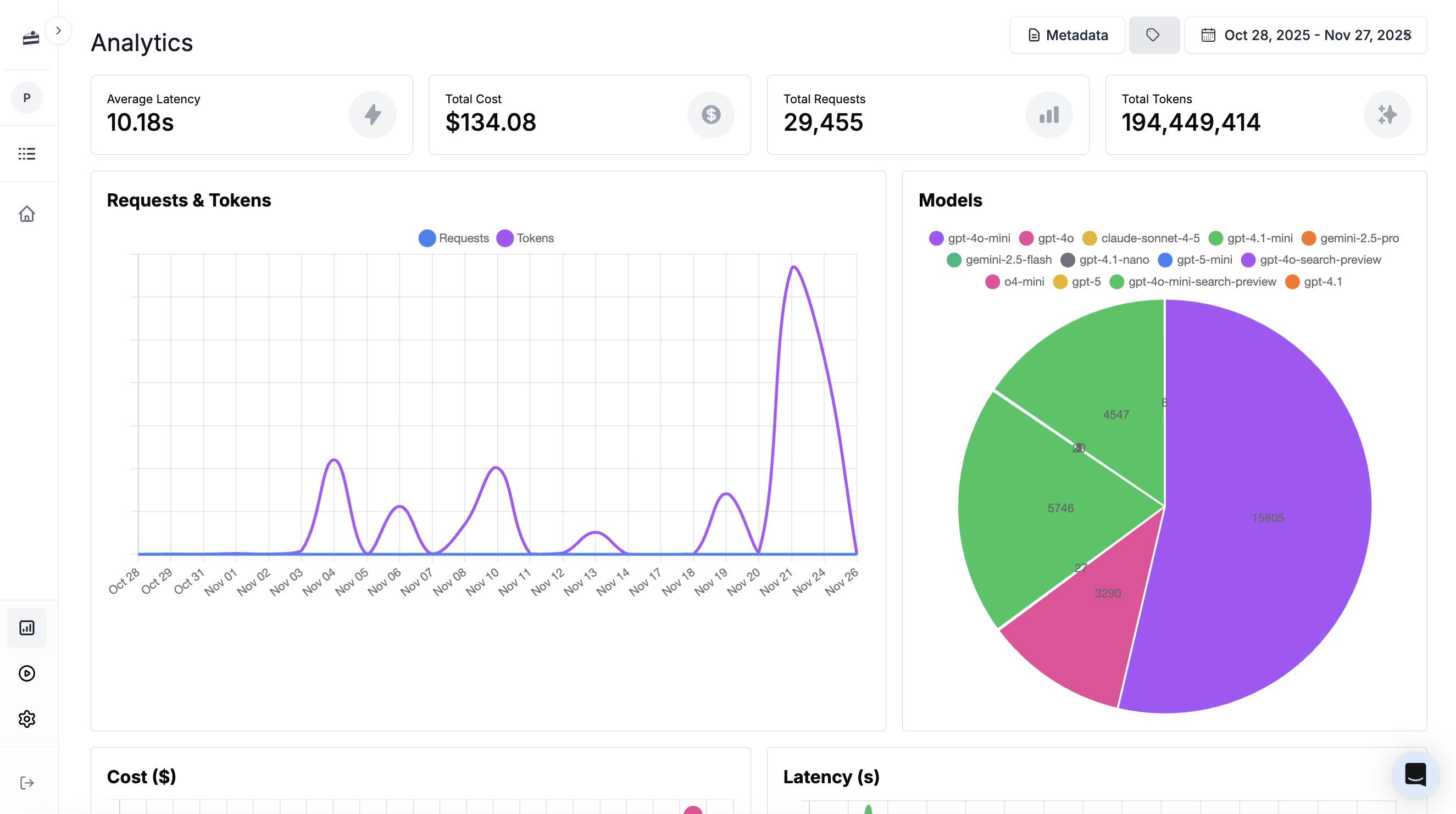
Viewing Logs
Click Logs in the sidebar to see all requests. You can filter by prompt, search by content, and debug errors.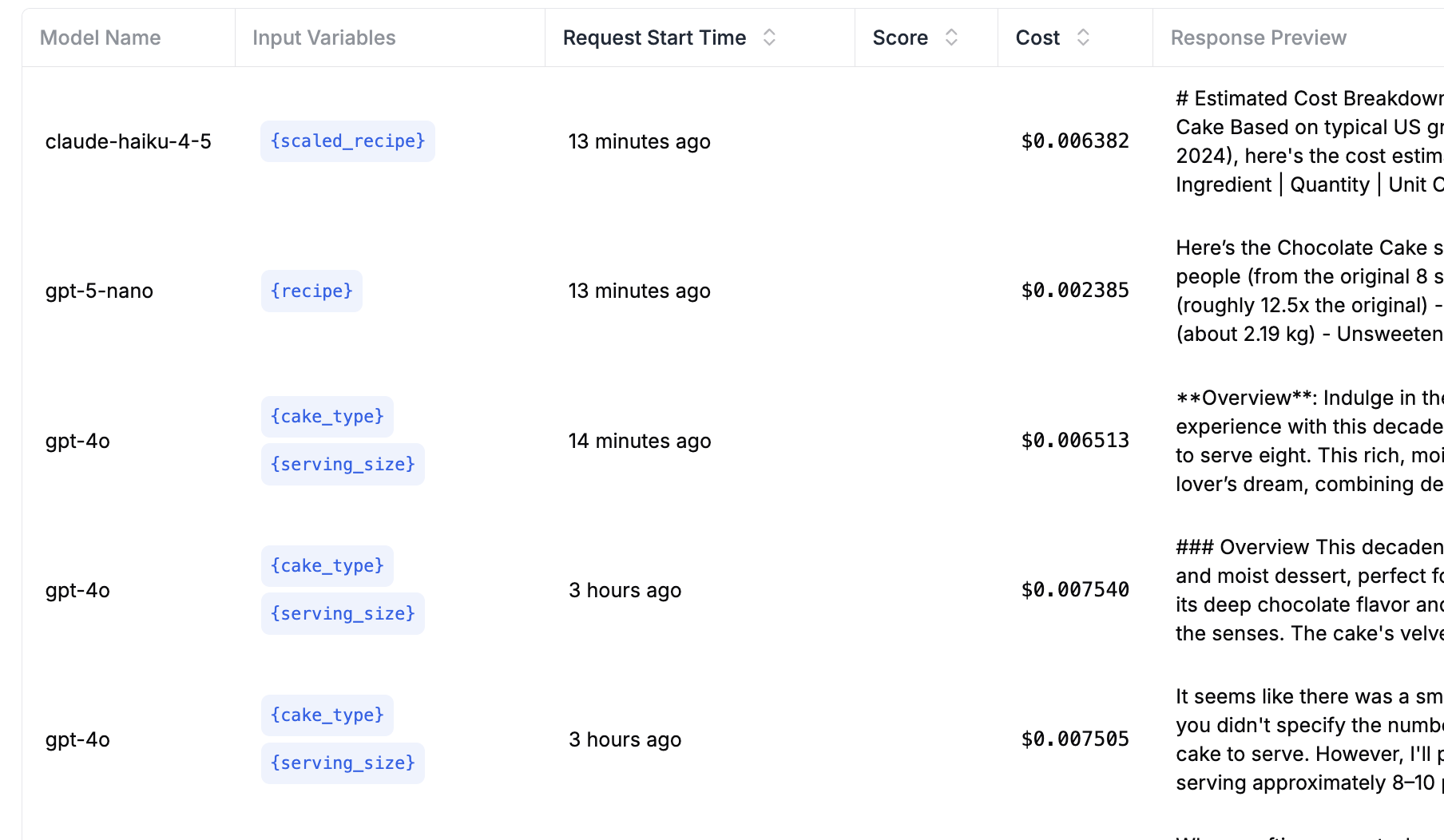
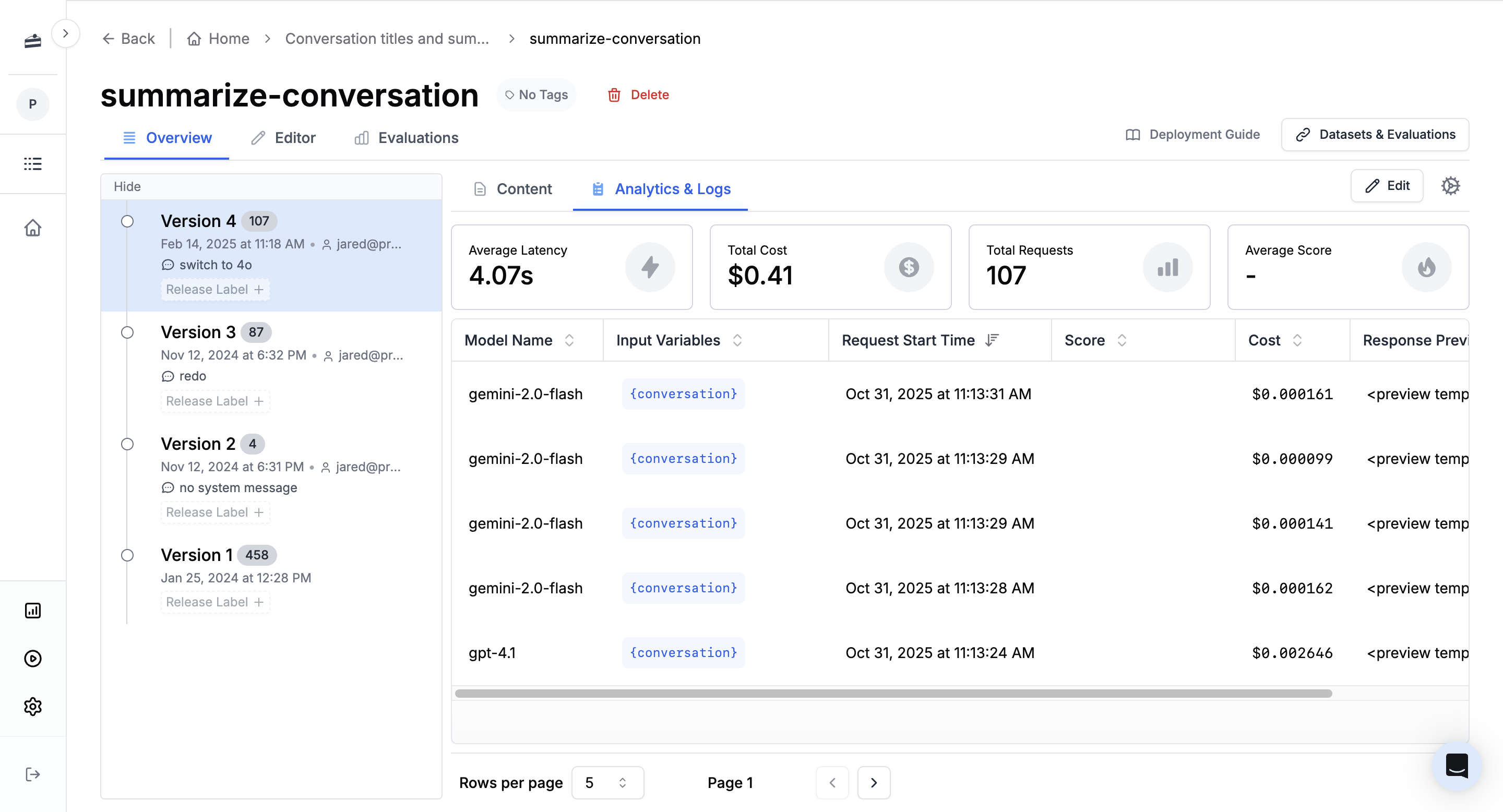
Traces and Spans
For agents, traces show each step of the workflow as spans. You can see timing, inputs, and outputs for every step. Traces are OpenTelemetry (OTEL) compatible, so you can integrate with your existing observability stack.
Prompt Management
- Scalable Prompt Management and Collaboration — Best practices for organizing and collaborating on prompts
- Prompt Management — Why prompt management matters
Evaluations
- Eval Examples — Building RAG chatbots and migrating prompts
- How to Evaluate LLM Prompts Beyond Simple Use Cases — Advanced evaluation techniques
- Production Traffic is the Key to Prompt Engineering — Using real data to improve prompts
Migration
- Migrating Prompts to Open-Source Models — Switching to Mistral and other open-source LLMs
- Migration Guide — Moving to PromptLayer from other solutions

